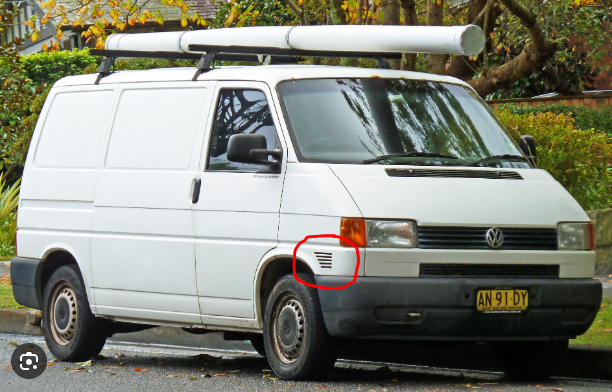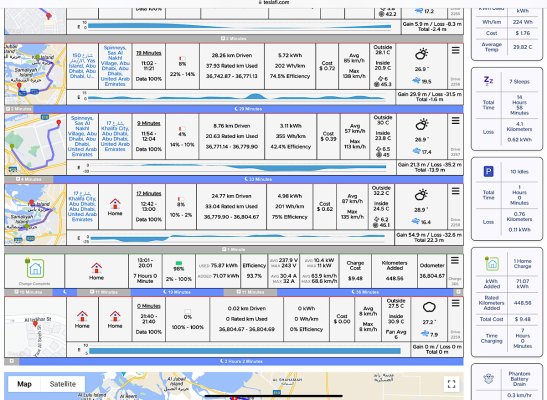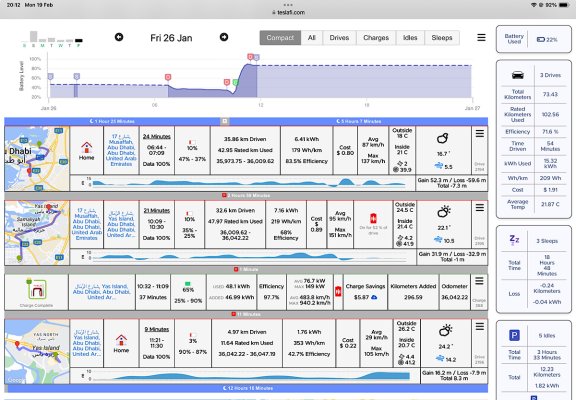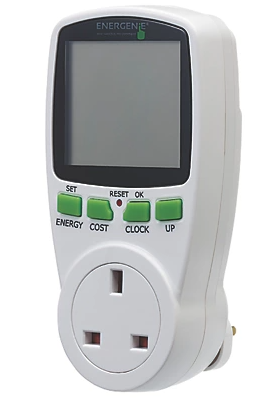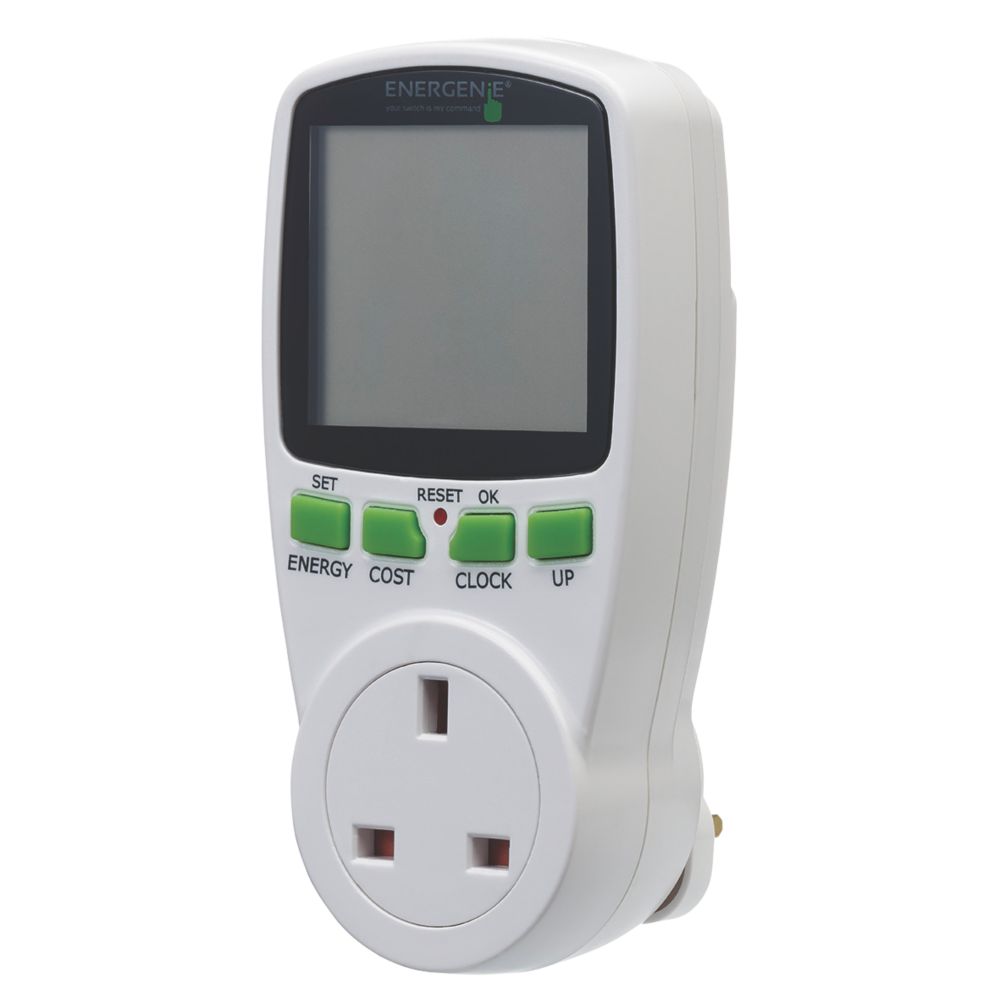Hi
Below is a screenshot from my TeslaFi app which gives very extensive data on your Tesla - including how much power you put into your car along with how much was consumed.
On Saturday, I purposely ran my battery down to a very low state of charge (2%) and then charged it fully to 100% on my home charger.
This allows the BMS (Battery Management System) the opportunity to recalibrate and after doing this each time (every 3 months or so) - you see the potential full range increase slightly (and therefore the percentage battery degradation since new is reduced slightly)
You can see from my screenshot that to charge from 2% to 100% on a 3-phase 11kw home wall box it took exactly 7 hours and 0 minutes.
It put 71.07kw/h into the battery but consumed 75.87kw/h from my home electricity supply (at an equivalent cost of $9.48 - converts to around 34.8 AED or £7.53 - this will give me around 460 km (285 miles) if I drive sensibly!
The conversion efficient is therefore shown as 93.7%.
I lost 4.8 kw/h in charging due to losses - which costs me around 30p
The bottom screenshot shows a DC fast charger session on a 250kw Supercharger at our local shopping mall - which is just a few minutes from our house.
This charged from 25% to 90% in 37 minutes with 97.7% efficiency - and in fact would have been quicker and more efficient if I lived further away from it - as the battery charges better if you navigate to the charger and the battery then gets pre-heated to the optimum temperature to accept the fastest charge.
View attachment 153481View attachment 153482
Cheers
Steve

